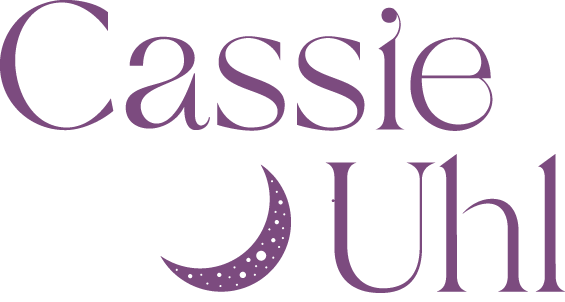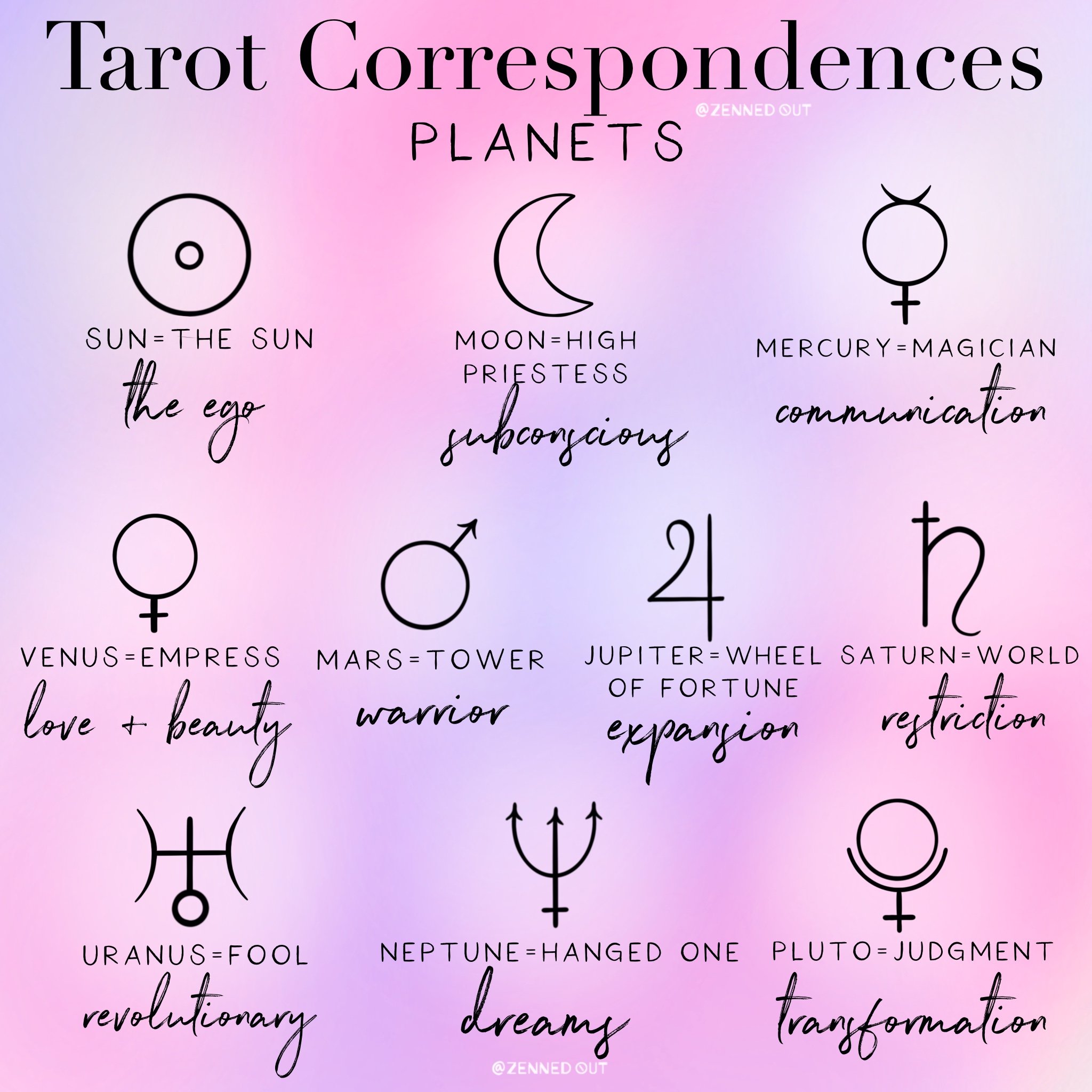6 Tips to Learn the Tarot Card Meanings Quickly
So you got your first tarot deck, did a couple of solo readings, and then never picked it up again? Or, you work with tarot regularly but find yourself frustrated with being so reliant on the guidebook? One of the biggest hurdles people face when getting started with tarot is learning the card meanings. This kept me from diving deep into the tarot for years, too; I get it!
There are much easier techniques to learning the meanings of all of the cards besides memorizing a guidebook word for word for 78 different cards. Not only is memorizing a guidebook of 78-card meanings not very feasible, but it’s also an intuitive disservice in working with the tarot.
What if I told you that you could have a robust knowledge of all 78 cards by learning only 36 correspondences? I know 36 is nothing to sneeze at, but here’s the thing, the 36 correspondences I’ll layout in this post will not only help you understand the energy of each tarot card but will also help you in nearly all other facets of spellwork and magick.
What are correspondences?
Correspondences are simply energies that play well together or match. Each card of the tarot has at least a couple of correspondences, and when you better understand each card's correspondences, you’ll also understand the energy of each card. The correspondences associated with tarot are not unique to tarot and relate to numerology, astrology, witchcraft, and more. Plus, there’s a good chance that you’re already familiar with some of the correspondences that I’m going to outline in this post. If you are, that’s great! You’re already a step ahead.
Before you dive in, correspondences and their meanings can be rich and deep. They can also vary somewhat from person to person. What I share here is enough to get you started to build a strong foundation, but I recommend digging deeper into the ones you’re less familiar with.
Dive deeper into tarot correspondences in my book, Understanding Tarot. You might also find that reading an introductory book on numerology or astrology will really deepen your understanding of those specific correspondences. You can also read up on numerology and the four elements right here on the blog! Click here for more on the elements and here for more on numerology.
Let’s dive in. Here are 6 tips to help you learn the tarot card meanings quickly.
1. Understand your learning style!
Before we jump into understanding the correspondences of tarot, you need to get super clear about how you learn and use that method as we dive into the correspondences. If you’re a visual learner, get a journal and start drawing and writing down what the correspondences below mean. If you’re an auditory learner, consider listening to an audiobook about the correspondences listed below. If you learn by doing, continue working with your tarot deck to weave this knowledge into your readings. Not sure how you learn best? Try a few different ways listed above and see what sticks.
2. Understand Basic Numerological Meanings
The largest part of a tarot deck, and for many, the trickiest cards to learn, are the numbered suit cards of the Minor Arcana (think 2 of cups and 4 of wands, etc.) Understanding the basic numerological meanings will make you feel MUCH more confident with these cards. There are ways to use numerology in the Major Arcana too, which you’ll be able to learn more about in my new book. For the minor arcana, use these numerological meanings to give you clues about what each card means.
New beginnings
Balance
Creativity
Foundations
Change
Partnership
Intellect
Mastery
Endings
This one is kind of unique to tarot because, in traditional numerology, you always reduce down to a single-digit between 1-9. Fortunately, the meaning often in regards to the tarot is pretty obvious. It points to an end of a cycle and transitioning to a new phase. It has a slightly different feel than 9 in that it signals a willingness to move on.
3. Understand the 4 Elements
Earth, air, water, and fire are, in my opinion, foundational in any magickal or divination practice. The elements are the energies that we’re made of and can be utilized in nearly all facets of a spiritual and magickal practice! Each of the four elements corresponds with a suit of the minor arcana, shown here.
Cups- Water
Pentacles- Earth
Swords- Air
Wands- Fire
Now that you know more about the meanings associated with the numbered cards of the minor arcana, you can also apply the corresponding element. Now you have two things to go off of to understand the energy of each card better. Here’s a list of how the energy of the elements express themselves.
There are ways to apply your understanding of the elements to both the minor arcana's court cards and the major arcana. I discuss these more in my book, but this is a great place to start!
4. Understand Zodiac and Planetary Meanings
We’ll begin to transition more to the major arcana for this one. Each of the major arcana cards corresponds with either a planet or a zodiac sign, giving it a unique energy.
The Fool - Uranus
The Magician - Mercury
The High Priestess - The Moon
The Empress - Venus
The Emperor - Aries
The Hierophant - Taurus
The Lovers - Gemini
The Chariot - Cancer
Strength - Leo
The Hermit - Virgo
Wheel of Fortune - Jupiter
Justice - Libra
The Hanged One - Neptune
Death - Scorpio
Temperance - Sagittarius
The Devil - Capricorn
The Tower - Mars
The Star - Aquarius
The Moon - Pisces
The Sun - The Sun
Judgment - Pluto
The World - Saturn
Here are examples of how these energies express themselves. Zodiac Signs
Planetary Meanings
Sun - Ego
Moon - Subconscious
Mercury - Communication
Venus - Love
Mars - Warrior
Jupiter - Expansion
Saturn - Restriction
Uranus - Revolutionary
Neptune - Dreams
Pluto - Transformation
5. Learn how Astrological Energies Correspond with the Elements
I imagine correspondences as a web of intersecting energies that play off of each other. When you understand how these different energies match up or repel each other, it will take your understanding of the tarot cards' meanings to a deeper level.
Each of the zodiac signs and planets corresponds to an element. Now, with your understanding of the elements and basic astrology, you can weave these meanings together. Here’s a list of how the planets, zodiacs, and elements correspond with one another.
Aries - Mars - Fire
Taurus - Venus - Earth + Water
Gemini - Mercury - Air
Cancer - Moon - Water
Leo - Sun - Fire
Virgo - Mercury - Earth + Air
Libra - Venus - Air + Water
Scorpio - Pluto - Water
Sagittarius - Jupiter - Fire
Capricorn - Saturn - Earth
Aquarius - Uranus - Air
Pisces - Neptune - Water
With this information combined, we can see that the Empress corresponds to Venus, the earth element, and Taurus. Therefore the Empress card relates to love, beauty, and creation from an earthly and material perspective.
6. Pair this Knowledge with your Intuition
Think of all of this correspondence knowledge as a way to bolster your intuition. They’re not the end all be all of learning the tarot, but they go a LONG way! The more comfortable and confident you become in understanding these correspondences, the easier it will be for you to intuit the card meanings for yourself and others without a guidebook. The correspondences are better than a guidebook because they give you nudges and insights about what the cards have to tell you, rather than a definitive answer.
Learn more about building up your intuitive muscles here in this previous post.
Now it’s time for you to put these tools into practice. Find a way to learn them that works for you, and watch your ability to understand the tarot card meanings flourish!







